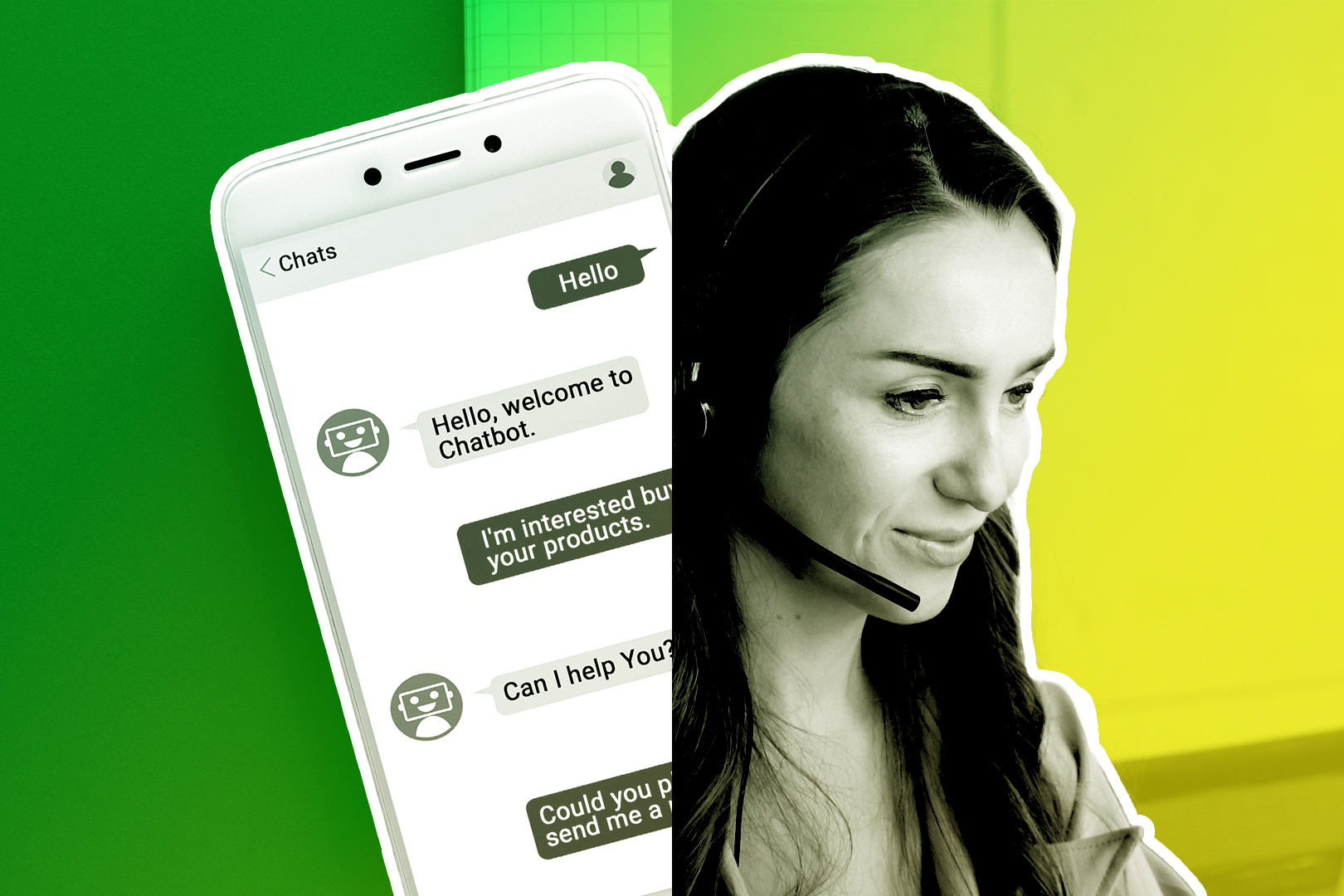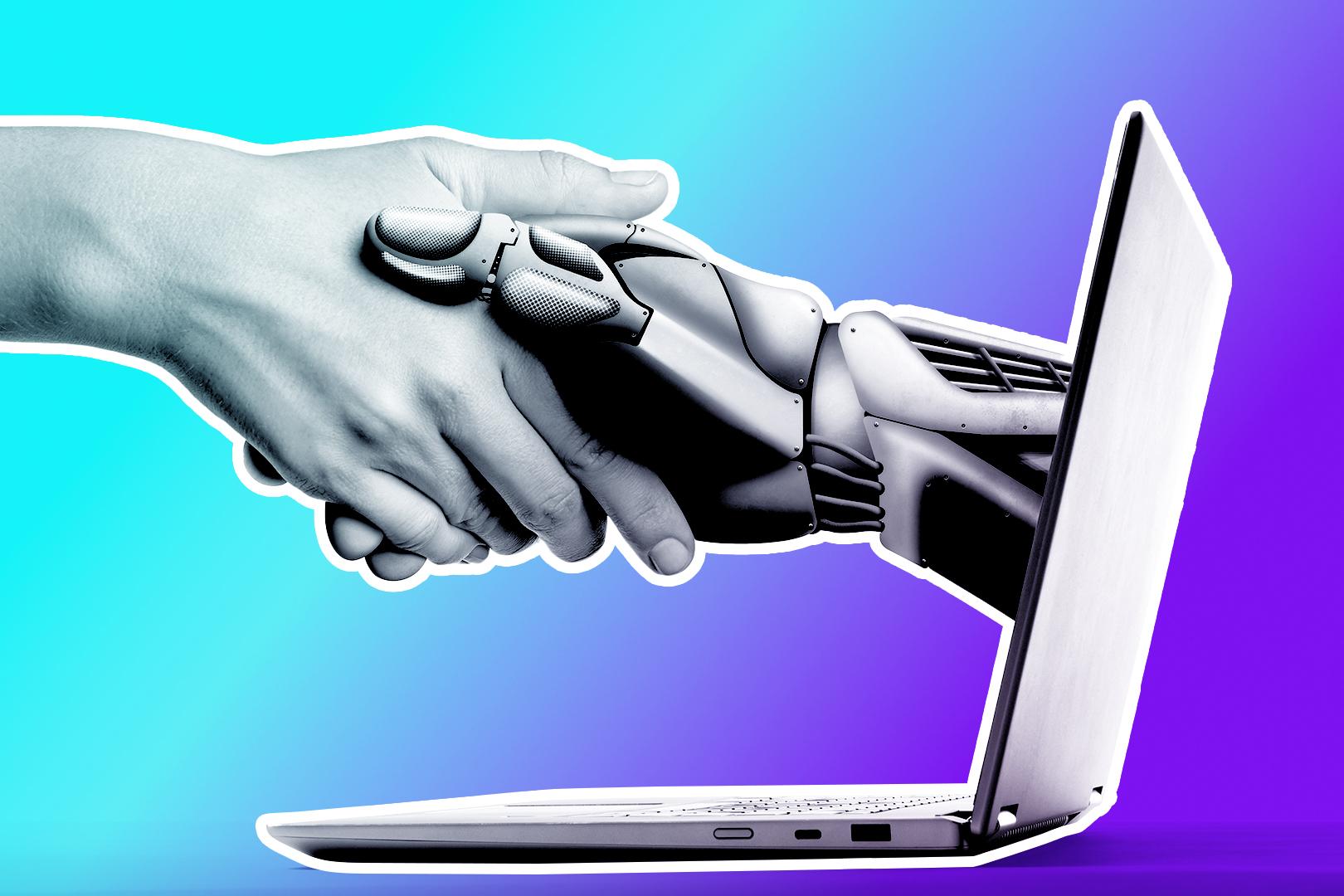If you’ve ever had a call or a meeting with me, then you scheduled it through my awesome assistant, Mary. She keeps my calendar running smoothly and follows up with folks right on time. She’s so organized and professional that some people don’t even think she’s human.
No, seriously. People ask me all the time, “Steli, is Mary a real person?” It seems ridiculous. I talk to Mary everyday. She’s got family, friends, goals, dreams—stuff every other human has. Why do I hear this question so often?
It’s because people actually do run into virtual versions of Mary—artificially-intelligent (AI) assistants who schedule meetings and follow-ups. More and more tech-savvy professionals now use AI applications to automate commonplace human interactions.
But despite AI's growing popularity, many people still find it unsettling—especially salespeople. AI challenges the fundamental principle of sales, and asks whether relationship building can be outsourced to machines. It’s more than idle speculation: the answer could determine the future of sales.
AI in sales today
There are already software companies out there using AI to automate parts of the sales process. Here are some notable ones.
- Calendly takes care of scheduling. Users get a personal appointment calendar they can link to in their emails and recipients schedule meetings by choosing from the user's available times. It replaces the annoying “when are you free?” conversation. While not a full-fledged AI, Calendly eliminates a job that previously fell to a salesperson or assistant. Think of it as an AI precursor.
- Clara, on the other hand, is an AI that you can CC on emails and ask to schedule meetings. It messages back and forth with your associates, just like a live employee setting up a meeting. You can even customize Clara's name and gender.
- Conversica is a virtual sales assistant—it uses AI to contact and qualify leads. Conversica purports that its automated employee can reach out to leads, ask them questions, and understand the answers. As with Clara, it presents itself as a real person rather than an AI.
- Rephrase.ai is basically a deepfake for sales tool. It allows you to create personalized video sales pitches at scale. You give them a script, choose a video avatar, connect it with your CRM and the tool will send out deepfake videos that speak the script you inserted, including the person's name. They raised $1.5 million from Lightspeed Venture Partners and AV8 Ventures in September 2020.
These applications are geared at improving sales productivity. They eliminate time-consuming busywork and allow salespeople to focus on the mission-critical parts of the job. It’s easy to see why that’s so useful. No one wants to waste time on email setting up a demo, when they could be closing another deal.
Because of that, AI software is quickly becoming popular in the B2B world. Thanks to early-adopters, startup customers are familiar with AI assistants and tools. They know how closely their communication resembles that of a real person—closely enough that many have trouble telling the difference. A company called Soul Machines is developing chatbots that look and talk like surprisingly human, read your facial expressions (via font-facing cameras) and respond to what you say, and it's only a question of time before this technology advances and becomes more commonly used in sales.
Human or AI … why does it matter?
After nine or ten people asked me whether or not Mary was real, I wondered why they even cared, as long as the meeting was scheduled.
It’s because people crave human interaction. Even when you’re just emailing back and forth, you instinctively picture another person reading your messages. The possibility of an AI writing back is jarring because it interrupts that natural, sub-conscious thought process. Instead of simply visualizing a person, you consider a strange alternative—that there’s a machine on the other end. And there’s no feasible way to know the truth, short of asking, “Hey, by the way, are you a human?”
That uncertainty undermines trust. As a recent Fast Company article points out, people are reluctant to trust AI with important decisions. Imagine riding in a friend’s car versus a self-driving car. If your friend slammed on the brakes, turned, and sped off in a new direction, you’d be concerned at first, but would feel okay once she provided an explanation—“We were going the wrong way.” If a self-driving car did the same, that explanation might not satisfy you. You can't trust an AI as much as your friend because it’s not driven by the human emotions you’re familiar with—it just does what it’s programmed to do.
That’s why these questions around AI matter so much to salespeople. No one will buy a product from someone they don’t trust. Yes, some SaaS companies go with the self-service model, and don’t need salespeople. But when it comes to more expensive, sophisticated products, customers want the security of buying from a real, live person—someone honest and credible.
“To sell is human”
Sure, you might be thinking. But how long until an AI can provide that person-to-person buying experience? What will salespeople do then?
It’s true that AI is becoming more human. In 2014, the Eugene Goostman supercomputer became the first ever to pass the Turing Test. That means it convinced human judges that it was a person through a text-based conversation. The test was initially designed by computer pioneer Alan Turing in 1950, who believed any machine able to pass it could be said to be “thinking.”
But here’s the thing about sales: feeling is much more important than thinking. It’s not enough to just convince a prospect you’re human—anyone can do that. You have to empathize with the issues they’re facing and help them understand why your product is a solution. Yes, an AI could list off all your product’s benefits, but it takes emotional intelligence to understand a customer’s situation and frame how those benefits would add value.
As AI gets better at imitating us, salespeople will need to excel at the uniquely human aspects of communication. Consider the following:
- What’s the biggest difference between humans and AI? Unlike AI, we have an identity outside of our work. Let your customers see that. They'll find you more relatable when you remember something about their personal lives or share something from your own.
- Not only do facial expressions and body language improve sales conversations, but they’re also things AI has yet to master. Take advantage by conducting more business either in person or by video conference.
- If AI eventually gets really good, you could always try adding a “certified human” tag in your email signature.
I’m no expert on AI, but, maybe aside from that last one, those strike me as ideas only a real person could convincingly pull off.
What do you think?
One of the best things about startups is their willingness to embrace innovation. AI is still in its infancy and already helping people be more productive. But, while it can automate away everyday elements of communication, building strong relationships is still the core of sales. Sorry, Siri—for now, only people can do that.
I’d love to hear from the audience on this, especially any of you who might be more plugged in to the AI world. Go ahead and tweet your predictions @steli with the hashtag #certifiedhuman.
Recommended reading:
13 scheduling tools for salespeople
One of the biggest time-wasters in sales is scheduling appointments. If the thought of using AI to become more productive excites you, here's 13 tools that help simplify scheduling calls and meetings.
Nobody will ever buy your product if they don't trust you. Everybody gets that in theory—but few people know how to use that in the B2B sales process. Build trust and you'll get an edge over your competitors, both human and AI.
What's the best way to become a great salesperson? How can you become a true master of the sales profession? Here's what I learned on my quest to sales virtuosity ...












